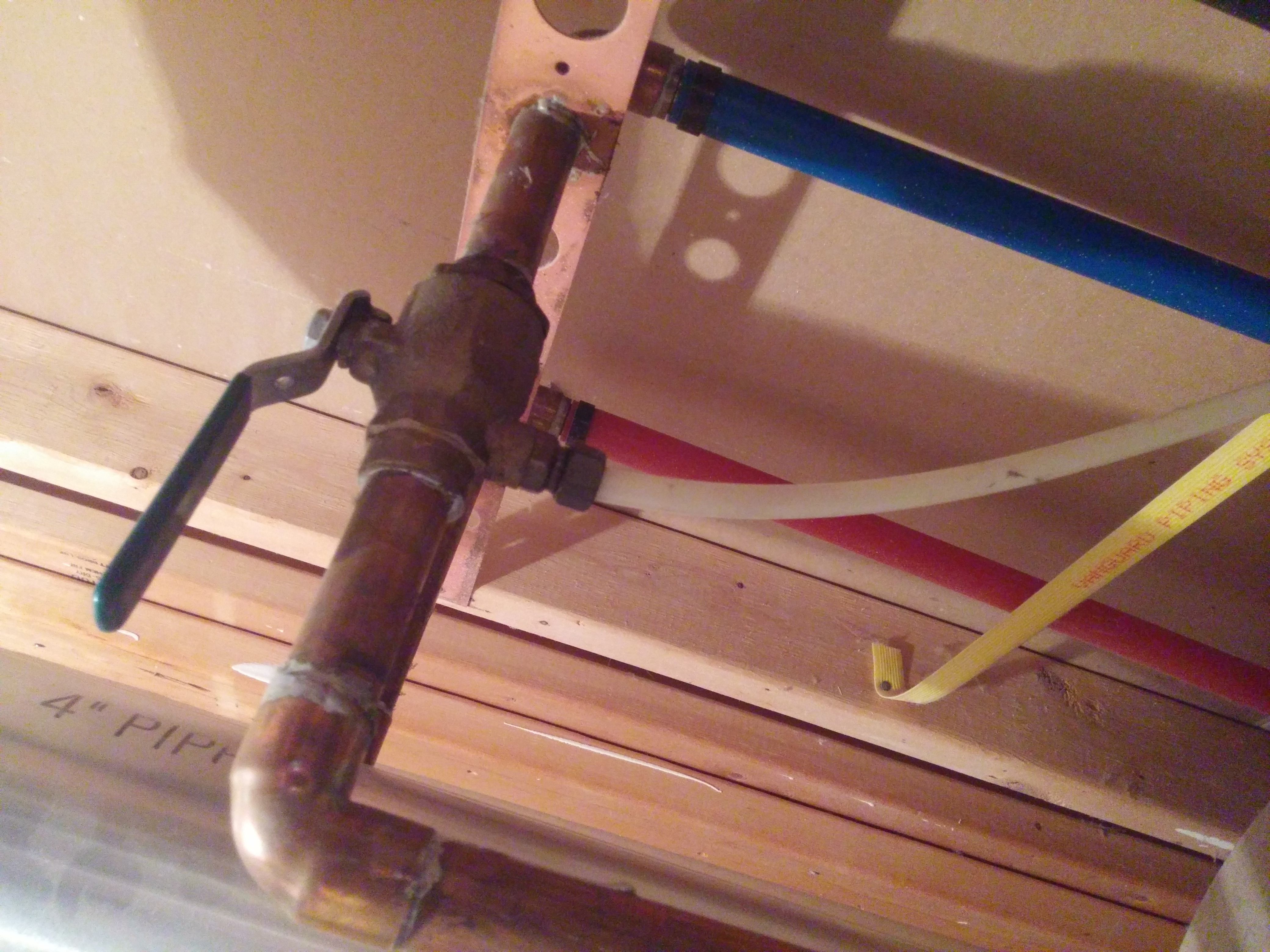thumper300zx
Member
I have a ball supply valve with a low [edit: previous was wrong and read 125psi] pressure release. It seems over the last year or so it's been leaking off more and more water. There isn't a 'rebuilt' kit for the little release valve/spring assembly. It's been really cold outside and the discharge formed an icicle outside, clogging the drain and eventually it backed up all the way to the drain pan and spilled over a bit. Lucky for us, it was a bit warmer that same day and it melted the icicle just enough that I heard a 'woosh' and the water drain out. We ended up with a very small amount of water that made it to the lower floor ceiling, but have avoided an imminent catastrophe.
The ball valve is a WATTS valve with pressure relief, and it's soldered in. I think I would like to install an expansion tank instead. Was wondering, if I just remove the relief valve, can I adapt the expansion tank onto that port instead of cutting into the supply line (between valve and heat tank, of course)?
Thoughts? Someone else in our development had this same kind of thing happen. The plumber installed an expansion tank, and just capped off the old relief valve. As I said, I'm wondering instead if I could just adapt it onto the relief valve instead.
The ball valve is a WATTS valve with pressure relief, and it's soldered in. I think I would like to install an expansion tank instead. Was wondering, if I just remove the relief valve, can I adapt the expansion tank onto that port instead of cutting into the supply line (between valve and heat tank, of course)?
Thoughts? Someone else in our development had this same kind of thing happen. The plumber installed an expansion tank, and just capped off the old relief valve. As I said, I'm wondering instead if I could just adapt it onto the relief valve instead.
Last edited:





















![MEISTERFAKTUR drain snake 2.0 [50 FT] - with drill attachment - Ideal plumbing snake for sink and drain unblocking - Solid drain auger for real DYIs! (50 FT - 1/4 inch)](https://m.media-amazon.com/images/I/41VwmTiOsgL._SL500_.jpg)








































